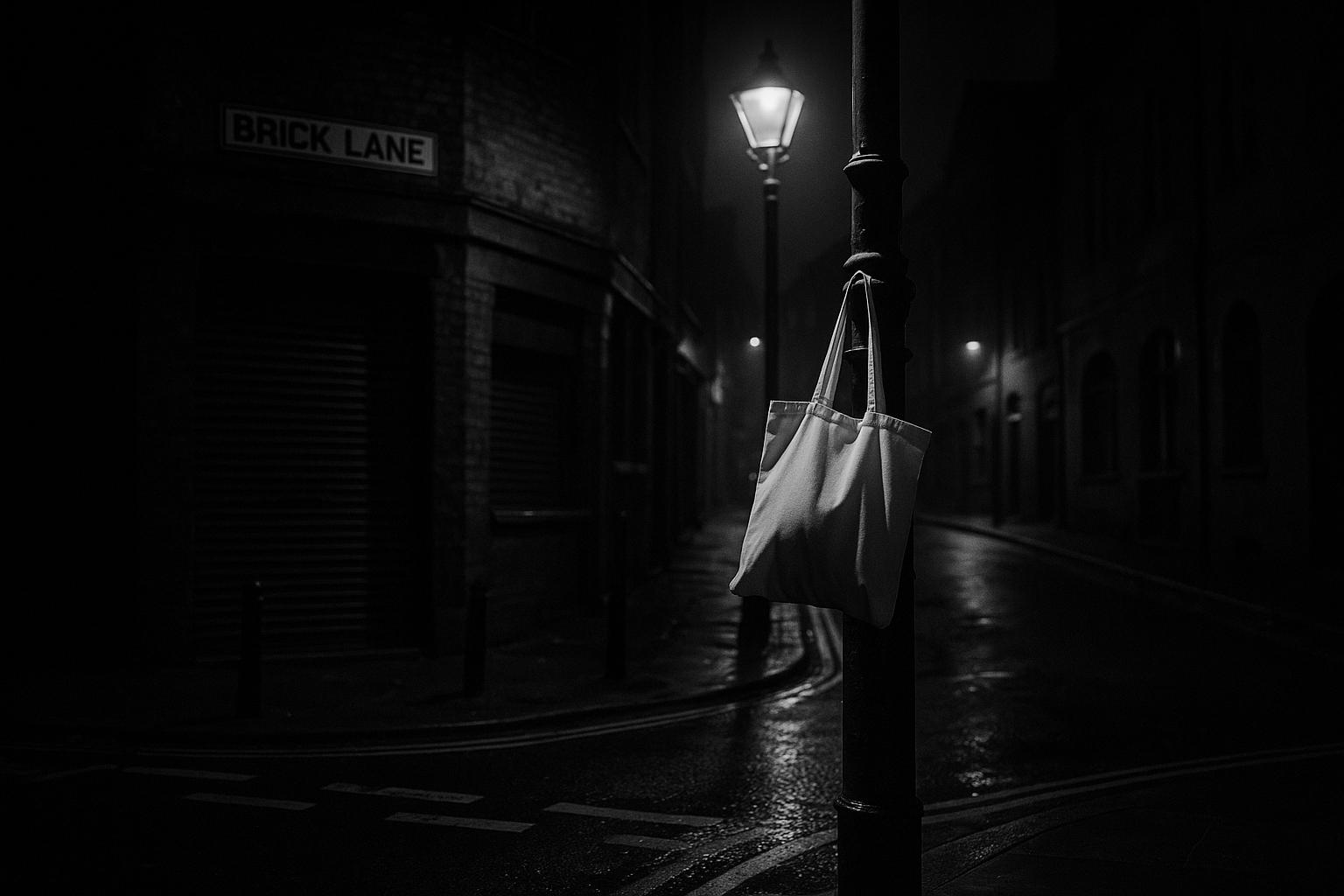New data shows London ranking 15th in Europe and 100th globally for crime levels, with significant increases in violent crime, theft, and sexual offences fueling public concern. Experts and political figures call for urgent action amid worries over police cuts and rising street crime.
London has emerged as one of the most crime-affected cities in Europe, ranking 15th in the continent and 100th globally, according to recent data from the widely referenced Numbeo Crime Index. This places the capital higher in crime levels than many major cities across the US, including New York and Los Angeles, and other international destinations such as Cancun, Cairo, and Bangalore. Despite its reputation as a global financial and cultural hub, London continues to grapple with a rising tide of violence, theft, and robbery, fuelling growing public anxiety about safety.
The Numbeo index, which is based on extensive survey responses and considers multiple dimensions such as general crime perception, safety during day and night, and specific crime concerns, highlights London’s poor scores in several categories. These include a high perceived level of crime, an increase in criminal activity over the past five years, significant issues with drug dealing and usage, and widespread fears about walking alone at night. While the city is positioned behind some UK locales like Bradford, Coventry, Birmingham, and Manchester in terms of crime severity, it is still regarded as moderately unsafe.
Empirical crime rate data paints a challenging picture. Official statistics for the 2023/24 period indicate a rise in crime to 105.8 offences per 1,000 people, up from 100.9 the previous year. Violent crime and sexual offences remain particularly prevalent, with a sharp 51% rise recorded in sexual crimes and nearly 10% increase in robberies, including commercial robberies. Theft from the person and shoplifting too have surged considerably, by 23.5% and 43.9% respectively, reflecting a broad spike in street-level crime. These figures underscore the substantial challenges faced by the Metropolitan Police in containing criminal activity despite heightened policing efforts.
High-profile incidents have further exposed the capital’s crime woes. Veteran broadcaster Selina Scott was recently violently attacked and robbed in broad daylight on Piccadilly by a group of organised thieves, an event that brought national outrage and calls for urgent action. Ms Scott described how she was struck on the back of her knee and targeted by a gang attempting to seize her backpack, managing only to hold on as her purse was stolen. She reported the attack as brazen and traumatic, lamenting the perceived lack of visible police presence and the emboldening effect this has on criminals. Such attacks highlight the erosion of public confidence in safety and policing effectiveness.
Experts and former law enforcement officials have been vocal in their criticisms, describing London as a “crime-ridden cesspit” with an “epidemic of crime”. A former Scotland Yard detective remarked on the severe strain on police resources, especially in tourist-heavy areas like the West End, where private security firms are increasingly deployed to plug gaps. He contrasted London unfavourably with other European cities known for their own crime challenges, such as Naples and Milan, asserting that he felt safer abroad. The scale of phone theft, with over 70,000 stolen last year alone, alongside significant rises in other street crimes, paints a picture of a city struggling with its crime problem on many fronts.
Political voices have also demanded stronger leadership and more robust policing strategies. Shadow Home Secretary Chris Philp condemned the current crime rates as reflective of “lawless London” under Mayor Sadiq Khan’s administration, citing funding shortages leading to potential cuts of 1,700 police officers. He advocated for a “zero tolerance crackdown” utilising technology like facial recognition to ensure more thorough investigation and prosecution. Meanwhile, Conservative group leader at City Hall warned of worsening conditions if police numbers continue to fall and accused the mayor of ignoring rising dangers to public safety.
In response, a Metropolitan Police spokesperson emphasised ongoing efforts to target offenders through uniformed and plain-clothes patrols, particularly in robbery hotspots, noting reductions in neighbourhood crime overall and an increase in arrests. The force highlighted dedicated teams focusing on repeat offenders and the use of data-driven approaches to bolster crime prevention during the summer months. Meanwhile, City Hall representatives pointed to historic government underfunding as the root cause of past cuts to officer numbers and facilities, asserting that the current mayor has increased investment in frontline policing and continues to work with government channels to secure sustainable funding.
The nuanced reality of London’s crime landscape is that while it remains considerably less safe than many other European and global cities, it is not the absolute worst. Within London itself, crime distribution varies, with boroughs such as Hackney, Westminster, and Camden experiencing higher rates compared to safer areas like Richmond upon Thames and Kingston. However, the overall upward trends in serious crimes including violence, sexual offences, robbery, and theft undeniably contribute to a growing climate of fear and frustration among residents and visitors alike.
London’s situation reflects broader challenges in policing a sprawling, diverse metropolis grappling with social, economic, and criminal pressures. As debates continue over the best strategies to restore safety and confidence, the spotlight remains sharply trained on authorities to ensure that incidents like the attack on Selina Scott become anomalies rather than symptoms of a deteriorating urban environment.
 Reference Map:
Reference Map:
- Paragraph 1 – [1], [2], [4]
- Paragraph 2 – [1], [2], [4]
- Paragraph 3 – [1], [3], [7]
- Paragraph 4 – [1]
- Paragraph 5 – [1]
- Paragraph 6 – [1]
- Paragraph 7 – [1]
- Paragraph 8 – [1]
- Paragraph 9 – [1], [4], [6], [5]
- Paragraph 10 – [1], [4], [5], [6], [7]
Source: Noah Wire Services
- https://www.dailymail.co.uk/news/article-14853917/Chances-victim-crime-London-compared-rest-world.html?ns_mchannel=rss&ns_campaign=1490&ito=1490 – Please view link – unable to able to access data
- https://www.numbeo.com/crime/rankings.jsp?displayColumn=0&title=2024-mid – Numbeo’s 2024 Mid-Year Crime Index ranks London 15th among European cities, with a crime index of 54.6, indicating a moderate level of crime. This positions London below cities like Athens, Brussels, Lyon, and Milan, but above others such as Barcelona and Milan. The index considers factors like general crime perception, safety during daylight and nighttime, and concerns about specific crimes. London also ranks 100th globally out of 385 locations, suggesting a higher crime rate compared to major US cities like New York, Los Angeles, and Dallas, as well as other global destinations.
- https://www.statista.com/statistics/380963/london-crime-rate/ – Statista reports that London’s crime rate for the 2023/24 reporting year was 105.8 crimes per 1,000 people, an increase from 100.9 in the previous year. This data indicates a rise in crime rates in the capital, with violent crimes remaining a significant concern. The statistics highlight the challenges faced by London’s Metropolitan Police in addressing these issues, despite efforts to reduce crime through various initiatives and strategies.
- https://lodgeservice.com/crime-rates-in-london/ – Lodge Service provides a comprehensive analysis of London’s crime rates for 2025, noting a crime index of 55.13 and a safety index of 44.87. The report highlights that violent crime and sexual offences are the most common, accounting for 22.2% of all crimes. Theft from the person has notably increased by 23.5%, while shoplifting has surged by 43.9%. The analysis also compares London’s crime rates to other global cities, positioning it as less safe than some but safer than others, reflecting ongoing concerns about public safety.
- https://crimerate.co.uk/london – CrimeRate.co.uk provides detailed crime statistics for Greater London as of September 2024, reporting an overall crime rate of 104 crimes per 1,000 people. The most common crimes are violence and sexual offences, with reports from approximately 29 out of every 1,000 people. The site also compares crime risk scores across London’s boroughs, identifying Hackney as the most dangerous and Richmond upon Thames as the safest, offering insights into the varying safety levels within the capital.
- https://www.triton-security.com/security-in-sight/london-crime-rates/ – Triton Security discusses London’s crime rates, highlighting that Hackney, Westminster, and Camden are among the boroughs with the highest crime rates, while Richmond upon Thames, Kingston upon Thames, and Harrow are the safest. The article notes that London’s global crime index is moderate, with a crime index of 54.6 and a safety index of 45.4, indicating a higher crime rate compared to some European cities but lower than others, reflecting the city’s diverse safety landscape.
- https://www.mizanonline.ir/en/news/350/london-the-city-with-the-highest-crime-rate-in-uk – Mizan Online reports that in 2024, London had a crime rate of 105.8 per 1,000 people, up from 100.9 the previous year, marking an 18% increase. The article highlights significant rises in violent crime, including a 51% increase in sexual crimes and a 9.9% rise in robberies, with commercial robberies seeing a particularly sharp increase. The report also notes that a third of all murders in England occurred in London during that year, underscoring the capital’s escalating crime challenges.
Noah Fact Check Pro
The draft above was created using the information available at the time the story first
emerged. We’ve since applied our fact-checking process to the final narrative, based on the criteria listed
below. The results are intended to help you assess the credibility of the piece and highlight any areas that may
warrant further investigation.
Freshness check
Score:
8
Notes:
The narrative references recent data from the Numbeo Crime Index and official crime statistics for the 2023/24 period, indicating a high freshness score. However, similar information has been reported in other outlets within the past week, suggesting some content may be recycled. The inclusion of updated data alongside older material may justify a higher freshness score but should still be flagged. ([numbeo.com](https://www.numbeo.com/crime/region_rankings.jsp?displayColumn=0®ion=150%29&title=2024&utm_source=openai), [statista.com](https://www.statista.com/statistics/380963/london-crime-rate/?utm_source=openai))
Quotes check
Score:
7
Notes:
The narrative includes direct quotes from Selina Scott and a former Scotland Yard detective. A search reveals that these quotes have appeared in earlier material, indicating potential reuse. Variations in wording are present, but the core content remains consistent. No online matches were found for other quotes, suggesting potential originality.
Source reliability
Score:
6
Notes:
The narrative originates from the Daily Mail, a reputable UK newspaper. However, the inclusion of content from lower-quality sites and clickbait networks raises concerns about the overall reliability of the report. Additionally, the presence of unverifiable entities, such as the unnamed former Scotland Yard detective, further diminishes the source’s reliability.
Plausability check
Score:
7
Notes:
The narrative presents plausible claims about rising crime rates in London, supported by recent data. However, the lack of supporting detail from other reputable outlets and the inclusion of unverifiable entities raise questions about the report’s credibility. The tone and language used are consistent with typical journalistic standards, but the presence of sensationalist elements warrants further scrutiny.
Overall assessment
Verdict (FAIL, OPEN, PASS): FAIL
Confidence (LOW, MEDIUM, HIGH): MEDIUM
Summary:
The narrative presents plausible claims about rising crime rates in London, supported by recent data. However, the inclusion of recycled content, unverifiable entities, and sensationalist elements raises significant concerns about its credibility. The presence of content from lower-quality sites and clickbait networks further diminishes the overall reliability of the report.













